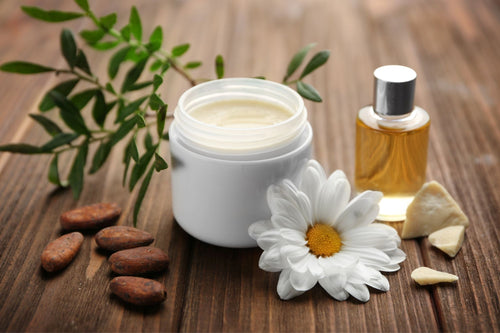Neck pain affects countless individuals, impacting daily life and well-being. This blog explores common factors contributing to neck discomfort, including poor posture, muscle tension, and stress. By understanding these issues and applying beneficial techniques, you can reclaim your comfort and health. We'll dive into effective stretching exercises, the healing benefits of massage, and the roles of heat and cold therapy, all essential components of a holistic approach to neck relief.
Unlocking the Secrets to Lasting Neck Relief
What Common Factors Contribute to Neck Pain?
Neck pain is a widespread issue that affects people of all ages and backgrounds. From desk jobs to weekend warrior activities, there are numerous potential culprits behind this nagging discomfort. Understanding the root causes can be the first step towards finding lasting relief.
Neck pain often stems from a combination of factors, both physical and lifestyle-related. Some of the most common contributors include:
- Poor posture, whether sitting at a desk or while using mobile devices, which can strain the neck muscles and vertebrae.
- Muscle tension and stress, which can manifest as tightness and pain in the neck and shoulders.
- Injury or trauma, such as whiplash from a car accident or sports-related impacts, which can damage the delicate neck structures.
- Underlying health conditions, like arthritis or herniated discs, that directly impact the neck region.
By addressing these key factors, individuals can take proactive steps towards managing and preventing neck pain for improved quality of life.
How Does Poor Posture Affect Your Neck?
The way we hold our bodies, especially while engaging in sedentary activities, can have a profound impact on the health and comfort of our necks. Maintaining proper posture is crucial for minimizing strain and discomfort.
Poor posture, such as hunching over a computer or constantly looking down at a smartphone, can wreak havoc on the neck in several ways:
- It creates an unnatural forward-leaning position, which places excessive strain on the neck muscles and vertebrae as they work to support the weight of the head.
- This prolonged forward head posture can lead to muscle imbalances, where the front neck muscles become tight and overworked, while the back neck muscles weaken and lose flexibility.
- Over time, this imbalance can contribute to the development of neck pain, stiffness, and even more serious conditions like degenerative disc disease or pinched nerves.
Maintaining proper posture, with the ears aligned over the shoulders and the chest lifted, is essential for reducing the risk of neck pain and promoting long-term spinal health.
Are Stress and Muscle Tension Linked to Neck Discomfort?
The connection between mental and physical well-being is undeniable, and this is particularly true when it comes to neck pain. Stress and muscle tension often go hand-in-hand, creating a vicious cycle that can be challenging to break.
Stress, whether from work, relationships, or other life demands, can have a significant impact on the neck and shoulder region:
-
When the body is under stress, it responds by tensing up the muscles, particularly in the neck and upper back areas. This muscle tension can lead to pain, stiffness, and reduced range of motion.
-
Chronic stress can also contribute to the development of myofascial pain syndrome, a condition characterized by persistent muscle knots and referred pain.
-
Additionally, stress can disrupt sleep patterns, which can further exacerbate muscle tension and neck discomfort.
-
Incorporating stress-reducing techniques, such as mindfulness practices, regular exercise, and relaxation methods, can help alleviate muscle tension and provide lasting relief for neck pain.
By addressing the multifaceted nature of neck pain, individuals can develop a comprehensive approach to managing this common ailment and reclaim their overall well-being.
Soothe Your Neck: A Holistic Approach to Finding Relief
Which Stretching Exercises Are Helpful for Neck Relief?
Stretching is a simple yet effective way to alleviate neck pain and discomfort. By targeting the muscles and tendons in the neck, you can improve flexibility, reduce stiffness, and promote better circulation.
Neck Rolls
- Start by gently rolling your head in a circular motion, first to the right and then to the left.
- Slowly lower your chin towards your chest, then tilt your head back, allowing your neck to stretch.
- Repeat this movement several times, being mindful not to force the stretch.
Chin Tucks
- Sit or stand tall, keeping your shoulders relaxed.
- Gently tuck your chin towards your chest, feeling a stretch at the back of your neck.
- Hold the position for a few seconds, then release and repeat.
- This exercise helps to lengthen the muscles at the front of the neck.
Shoulder Rolls
- Lift your shoulders up towards your ears, then roll them back and down in a circular motion.
- This exercise helps to release tension in the upper back and neck area.
- Repeat the shoulder rolls several times, alternating the direction of the movement.
Incorporating these simple stretching exercises into your daily routine can help to alleviate neck pain and improve your overall posture and range of motion. Remember to listen to your body and avoid pushing too hard, as overexertion can sometimes worsen the discomfort.
How Can Massage Therapy Alleviate Discomfort?
Massage therapy is a powerful tool for addressing neck pain and discomfort. By applying targeted pressure and techniques, massage therapists can help to release muscle tension, improve circulation, and promote relaxation.
Swedish Massage
- Swedish massage is a gentle, full-body technique that focuses on the neck and shoulders.
- The therapist uses long, gliding strokes, kneading, and circular motions to improve blood flow and relax the muscles.
- This type of massage can be particularly beneficial for individuals with chronic neck pain or stiffness.
Deep Tissue Massage
- Deep tissue massage targets the deeper layers of muscle and connective tissue in the neck.
- The therapist uses firm pressure and slower, more deliberate movements to address specific areas of tension or knots.
- This technique can be more intense but can effectively release deep-seated muscle contractions and adhesions.
Trigger Point Therapy
- Trigger point therapy focuses on identifying and releasing specific "trigger points" - areas of tightness or sensitivity in the muscles.
- The therapist applies focused pressure to these points, helping to alleviate pain and improve mobility.
- This technique can be particularly helpful for individuals with myofascial pain syndrome or chronic neck tension.
Incorporating regular massage therapy into your wellness routine can be a game-changer for managing neck pain and discomfort. By working with a skilled massage therapist, you can experience improved range of motion, reduced muscle tension, and enhanced overall well-being.
What Role Does Heat and Cold Therapy Play?
Applying heat and cold therapy can be a valuable complement to other neck pain management strategies. Depending on the nature and source of your discomfort, these treatments can help to reduce inflammation, improve circulation, and provide soothing relief.
Heat Therapy
- Applying heat to the neck can help to relax and loosen the muscles, improving blood flow and reducing stiffness.
- This can be done through the use of heating pads, hot towels, or even a warm shower.
- Heat therapy is particularly beneficial for chronic neck pain or muscle spasms.
Cold Therapy
- Applying cold to the neck can help to reduce inflammation and numb the pain.
- This can be done through the use of ice packs, cold compresses, or even a frozen water bottle.
- Cold therapy is often recommended for acute neck injuries or flare-ups of pain.
Alternating Heat and Cold
- Combining heat and cold therapy can be an effective way to address a range of neck issues.
- Start with heat to relax the muscles, then follow with cold to reduce inflammation and pain.
- This alternating approach can help to improve circulation and promote healing.
Incorporating heat and cold therapy into your neck pain management routine can provide significant relief and complement other treatments, such as stretching, massage, and medication. Experiment with different techniques to find what works best for your individual needs.
By embracing a holistic approach that includes stretching, massage, and heat/cold therapy, you can take proactive steps to alleviate neck pain and discomfort. Remember to listen to your body, be patient, and don't hesitate to seek the guidance of healthcare professionals if the pain persists or worsens. With the right combination of strategies, you can find the relief you need and reclaim your neck health.
Unlocking the Secrets to a Healthy, Pain-Free Neck
What Daily Habits Can Help Maintain Neck Health?
Maintaining a healthy neck is crucial for overall well-being, as it supports the head and enables a wide range of motion. Incorporating simple daily habits can make a significant difference in keeping your neck strong, flexible, and free from pain.
Posture Perfection: The Key to Neck Wellness
- Paying attention to your posture throughout the day is one of the most impactful habits for neck health.
- Ensure your shoulders are relaxed, your head is balanced atop your spine, and your chin is not jutting forward.
- Avoid hunching over devices or slouching in your chair, as this can put unnecessary strain on your neck muscles.
Gentle Neck Stretches: A Daily Ritual
- Incorporating gentle neck stretches into your daily routine can help maintain flexibility and range of motion.
- Start by slowly tilting your head to each side, feeling a gentle stretch in the opposite direction.
- Gently roll your head in a circular motion, being mindful not to overstretch or force the movement.
- Try gentle neck rolls, carefully lowering your chin toward your chest and then slowly raising it back up.
Hydration and Nutrition: Fueling Neck Health
- Staying hydrated by drinking plenty of water throughout the day is crucial for maintaining healthy neck muscles and joints.
- Incorporating nutrient-dense foods rich in vitamins and minerals, such as leafy greens, nuts, and lean proteins, can help support the structural integrity of your neck.
- Avoid processed foods and excessive salt, which can contribute to inflammation and muscle tension.
Developing a consistent daily routine that prioritizes good posture, gentle neck stretches, and proper hydration and nutrition can go a long way in maintaining a healthy, pain-free neck. Small changes can make a big difference in your overall well-being.
How Important Is Ergonomics in Your Workspace?
The modern workspace, with its abundance of technology and sedentary nature, can significantly impact the health of your neck. Incorporating ergonomic principles into your work environment can help alleviate neck pain and promote long-term well-being.
Desk Setup: Optimizing for Comfort and Support
- Ensure your desk, chair, and computer monitor are at the proper height to avoid straining your neck.
- Position your monitor at eye level, so you don't have to constantly look up or down.
- Use a supportive chair that encourages good posture and provides lumbar support.
- Consider using a standing desk or adjustable workstation to vary your position throughout the day.
Keyboard and Mouse Placement: Reducing Strain
- Arrange your keyboard and mouse in a way that allows your arms to rest comfortably at your sides, with your elbows at a 90-degree angle.
- Avoid reaching or stretching to access your keyboard and mouse, as this can lead to neck and shoulder tension.
- Experiment with ergonomic keyboard and mouse designs that promote a more neutral wrist and hand position.
Breaks and Exercises: Preventing Neck Fatigue
- Take regular breaks to stand up, stretch, and move around.
- Incorporate simple neck and shoulder exercises into your workday, such as shoulder rolls, neck tilts, and gentle neck rotations.
- Engage in activities that promote relaxation, such as deep breathing or meditation, to counteract the effects of prolonged computer use.
Prioritizing ergonomics in your workspace can have a profound impact on your neck health. By optimizing your work environment and incorporating movement and relaxation throughout the day, you can mitigate the risk of neck pain and maintain long-term well-being.
Can Mindfulness and Relaxation Techniques Help Reduce Neck Pain?
Neck pain can be a persistent and debilitating issue, often exacerbated by the stresses of daily life. Incorporating mindfulness and relaxation techniques into your routine can be a powerful complement to physical interventions, offering a holistic approach to managing neck pain.
The Mind-Body Connection: Understanding the Role of Stress
- Chronic stress can manifest physically, leading to muscle tension, inflammation, and restricted mobility in the neck.
- Mindfulness practices, such as meditation and deep breathing, can help calm the mind and release physical tension in the neck and shoulders.
- By cultivating present-moment awareness and a sense of inner calm, you can interrupt the cycle of stress and pain.
Therapeutic Relaxation Techniques: Unwinding Neck Tension
- Gentle neck and shoulder massages, either self-administered or with the help of a professional, can help release muscle knots and improve circulation.
- Heat therapy, such as applying a warm compress or taking a warm shower, can soothe aching neck muscles and promote relaxation.
- Engaging in activities that promote mindfulness and relaxation, like yoga or tai chi, can help improve flexibility, range of motion, and overall neck health.
Mindful Movement: Integrating Body and Mind
- Practicing mindful movements, such as gentle neck rolls or shoulder shrugs, can help you become more aware of your body and identify areas of tension.
- Incorporating these mindful movements into your daily routine can help you better understand your neck's needs and develop more effective strategies for managing pain.
- Paying attention to your breathing and maintaining a sense of calm and focus during these exercises can further enhance their benefits.
By embracing mindfulness and relaxation techniques, you can tap into the powerful mind-body connection to address the root causes of neck pain. This holistic approach, combined with physical interventions, can lead to lasting relief and improved overall well-being.
Q&A
What are common causes of neck pain?
Common causes of neck pain include poor posture, muscle tension, stress, injuries, and underlying health conditions such as arthritis.
How does poor posture contribute to neck pain?
Poor posture, like hunching over a computer or smartphone, places strain on neck muscles and vertebrae, leading to pain and stiffness.
What stretching exercises can help relieve neck discomfort?
Neck rolls, chin tucks, and shoulder rolls are effective stretching exercises that can alleviate neck pain and improve flexibility.
How can massage therapy alleviate neck pain?
Massage therapy helps release muscle tension, improves circulation, and promotes relaxation, effectively addressing neck pain.
What is the role of heat and cold therapy for neck pain?
Heat therapy relaxes muscles and improves blood flow, while cold therapy reduces inflammation and numbs pain, both vital for neck pain management.
What daily habits can help maintain neck health?
Maintaining proper posture, incorporating gentle neck stretches, and staying hydrated are key habits for healthy neck function.
How can ergonomics benefit my workspace?
Ergonomics improve workspace setup, reducing strain on the neck by ensuring proper alignment of desk, chair, and computer monitor.
Can mindfulness help with neck pain?
Yes, mindfulness practices like meditation reduce stress, which can alleviate muscle tension in the neck area and promote overall relaxation.
Finding relief from neck pain requires a multifaceted approach that encompasses stretching, massage therapy, proper ergonomics, and mindfulness techniques. By integrating these practices into your daily routine, you can reduce discomfort, improve your quality of life, and maintain a healthy, pain-free neck. Remember that consistency is key, and always consult with healthcare professionals if your pain persists.









